https://www.youtube.com/watch?v=_SCfT8NUudc
How to Draw Anything Using Basic Shapes
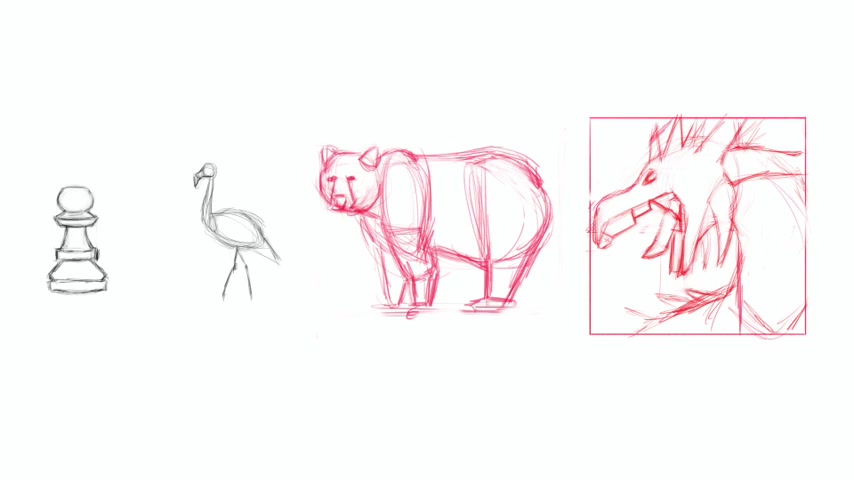
Everybody .
It's Mister Saran , we're talking about breaking things down into basic shapes and this is going to make your life so much easier when you're drawing .
OK .
So proportions , proportions are basically just the size of one thing in relationship to another .
OK .
You'll see that I have a basketball and a baseball .
What's wrong with this drawing ?
Of course , the baseball is too big .
So we're going to scale it down and you'll see that now it is proportionate or in other words , it has correct proportions .
Now we're going to draw this pawn .
I can just start out anywhere and I can just follow the lines that I see and try to get it to look like the pond in the picture .
But do you think I could do a little bit better than that ?
Of course , I did it really quickly , but still I could do that much better if I break it down into basic shapes ?
OK .
So I see a circle for the top .
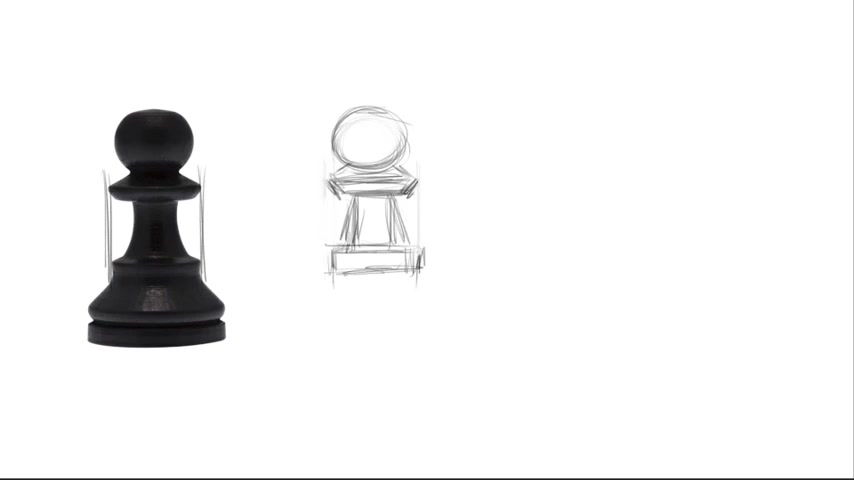
I see it come out kind of like a triangle with the peak cut off .
And now I see a rectangle and now I see a vertical rectangle , remember vertical is up and down , horizontal is left and right .
So now I am doing a horizontal rectangle and you'll see that I can add some lines every now and then to kind of judge and see a relationship between where things start and stop .
Now , I'm adding a triangle and another rectangle .
OK .
So now that I have the basic shapes in , then I can start to adjust things , I can add the curve in the middle section and I can start to adjust my lines , make sure things are straight , make sure things are lined up the way they need to be and start to add more detail .
OK ?
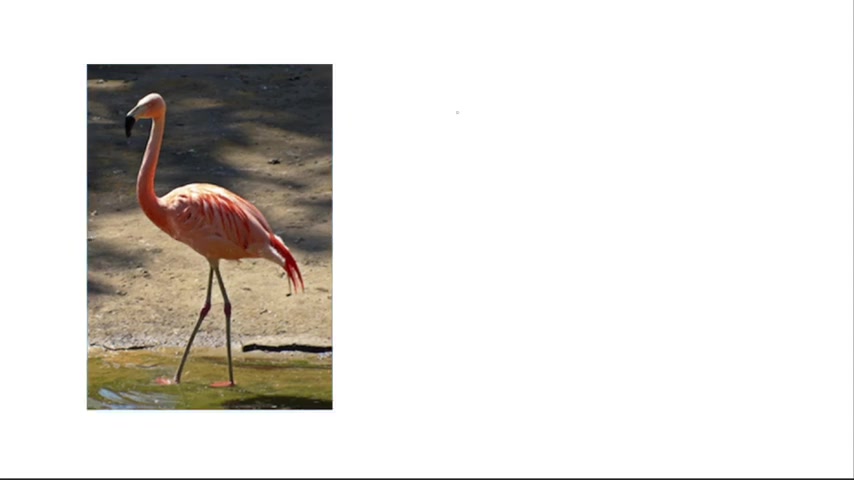
Which one do you think is better , easy to tell ?
Right ?
All right .
Now , let's work on this Flamingo .
You can do this same process with any picture , but for now we're just going to do this Flamingo .
So you'll see that by just starting and not thinking so much about getting it perfect .
You'll be a lot better off .
You just get something on your paper .
OK ?
Just like in English class , they might say create an essay .
Well , a lot of times it's best to create an outline first and come up with your main points , your main ideas and then from that outline , then you create your final essay .
So the same principle applies here .
Now we're breaking it down into basic shapes like ovals , rectangles and triangles .
And you'll see here that I am bringing two straight lines to kind of help be my guide .
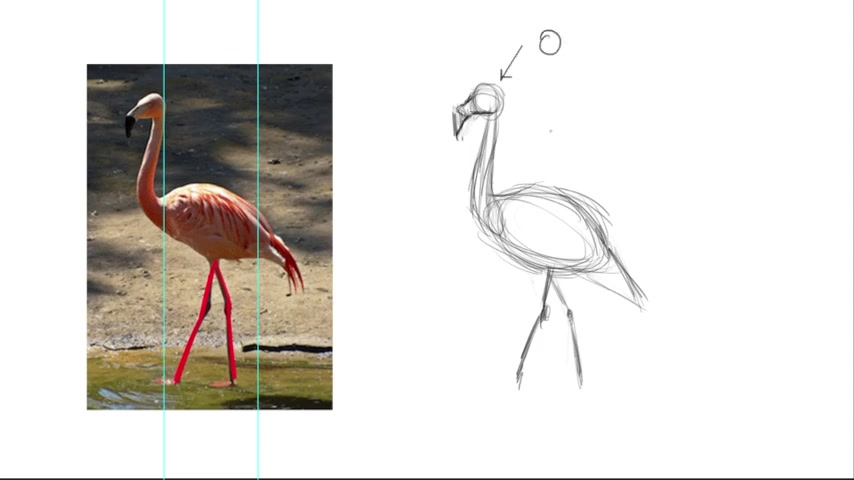
Now , you don't always have to do this .
But using straight lines as a guide really helps me to see the angle that the leg should be at .
It helped me to get a more correct picture .
Now , you'll see here that I'm using just circles and ovals and basic shapes really simple .
Now , with this bear , you can see that I'm creating a box around it to kind of be my container .
How many times have you tried to do a drawing where you just can't fit everything on the page because you made everything too big or maybe you made it way too small and it doesn't use up the space in your paper well enough .
So I'm gonna create a box and that bear is going to fit inside that box and you'll see that I'm just starting with simple shapes .
Just get it down on your paper .
Don't stress about making everything look right at the very beginning .
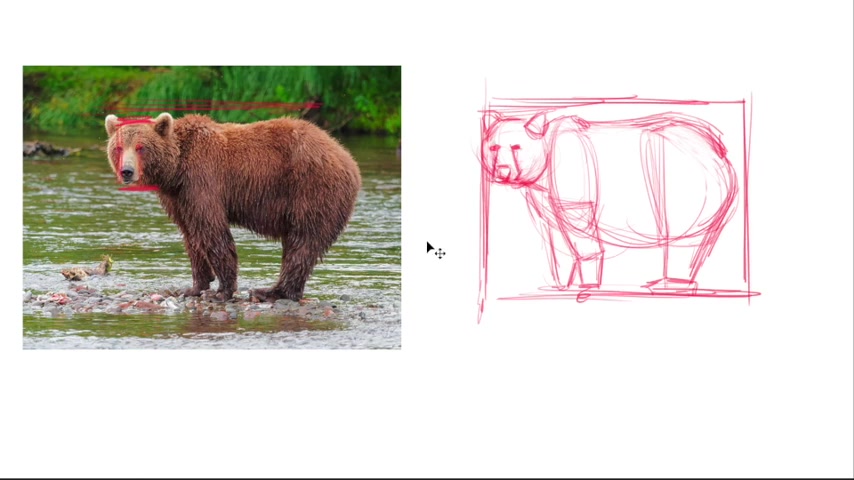
Just get something on your paper , make sure to draw very , very lightly , never draw dark at the very beginning , just draw light .
And that way you can change the things that you need to change .
And it's way easier to change a simple square or circle at the beginning than it is to shade it all and spend an hour on it and realize that something is in the wrong place or something's way too big or way too small .
So start with a simple outline and you'll be way better off .
So now that I have my basic outline of the bear , I'm starting to see some things like the space in between the legs is probably too far on my drawing .
So I'm going to try to bring it in by moving the arm .
And that way I can um make it more accurate to my photo reference .
I can erase the box and there I have a simple outline of the bear .
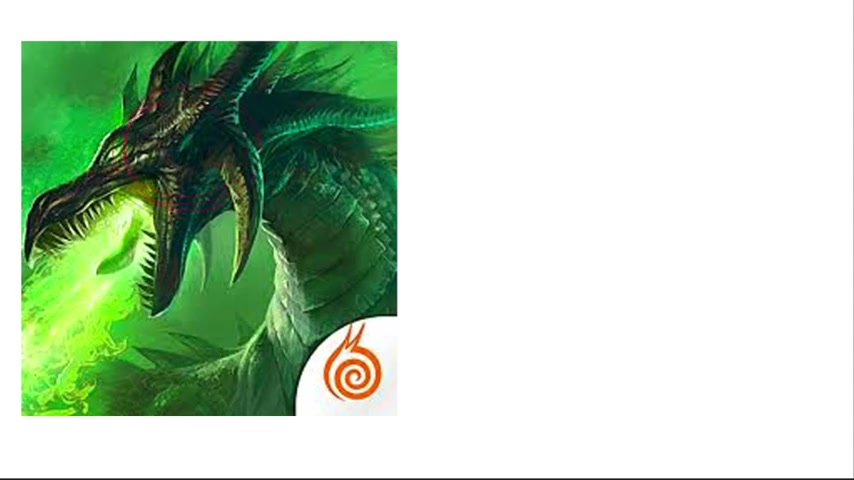
OK .
Let's move on to something a little bit more complicated .
But again , don't get stressed out about something like this .
If you want to draw a dragon like this , you absolutely can just break it down into simple shapes , try to recognize um those , those shapes that you can use .
All right .
And so now what we're gonna do is we're going to create a box um just using the outline of this photo that we have and I'm going to move that box over .
Of course , I can do that in Photoshop really easily .
And that , that's what I'm using to make .
This video is Photoshop .
But um for you guys , it's not going to be easy to do that when you're drawing on paper .
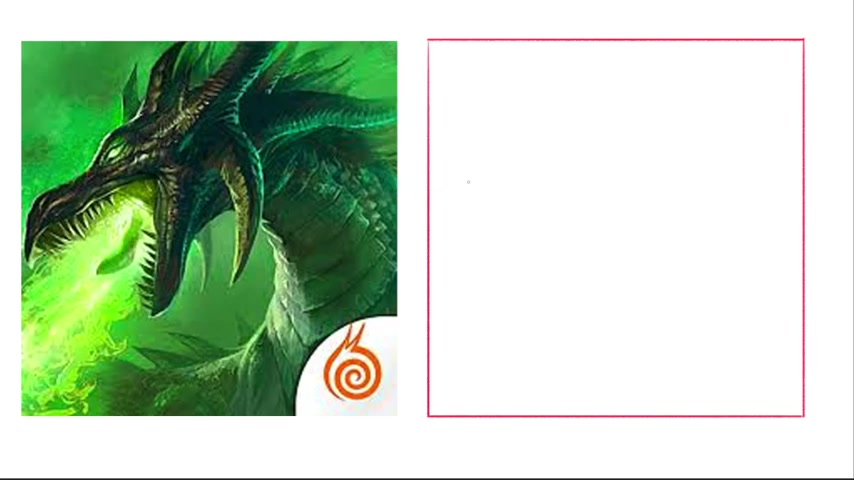
So um what you can do is either just trace the outline of the box onto your paper or you can measure it out with a ruler and then create your box um based on the exact size of the dragon here .
Now , you don't always have to draw the exact same size as your reference .
But um in this case , it's really useful .
So you know that you get things correct .
Now , I'm paying attention to not only what I'm drawing , which is the dragon , but paying attention to the things that I'm not drawing .
So you'll see that I'm creating a triangle and a couple of rectangles indicating where there is no dragon where there is just negative space , negative space is just space that's not being used in the drawing or the painting .
OK .
You'll see that I'm starting to use basic shapes .
Now , I don't want to start going in and trying to do all the angles .
Let's not do that yet .
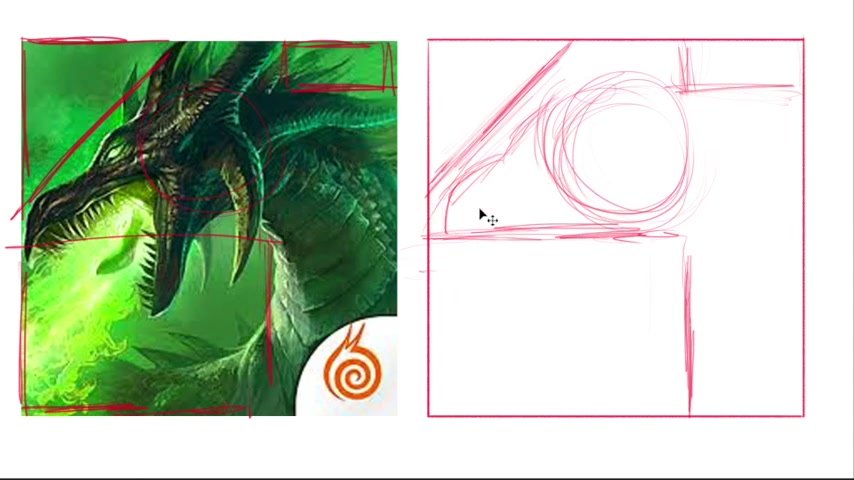
Uh You'll see that I started to add some of the detail in the nose , but of course , that's not something you want to start out with .
OK .
So I'm gonna start over , I'm gonna erase that and instead I'm going to just break it down into the most basic shapes .
So this top part I see as a rectangle , you might say it's something different , maybe an oval and that's fine .
Just as long as it helps you get your , your drawing to be more accurate .
I see the bottom part of the mouth as a triangle .
I see that bend of the neck kind of as a bean shape .
OK ?
And then once I get those , those big features and then I can start to do the other things .
I'm not gonna start with those little tiny um horns or uh whatever those are in the background .
I'm gonna start with the big horns in the foreground , which means in the front , not the stuff in the background .
OK .
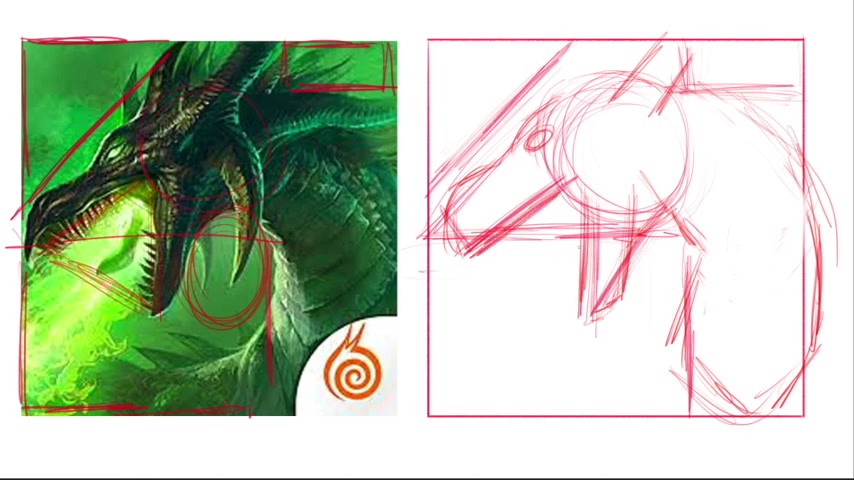
Now you'll see here um I'm noticing in between the chin and the neck , there's a much larger space in my photo reference than there is in my drawing .
So I need to make an adjustment there .
So I'm going to move the lip and , and make it more accurate to my photo .
OK .
It will also make that triangle in between the top part of the mouth and the bottom part of the mouth .
Uh where the tongue is that space , it's going to make it more accurate as well .
So now I can start to add a little bit more shape to my dragon because I have things laid out um where they need to be and I'm a little bit more sure of where things need to be .
OK ?
So now I can um erase some of my guidelines because it just starts to get messy .
So I'm gonna erase those lines that I don't need and I'm gonna continue on with some of the smaller more detailed shapes .
Now , I'm just going to do the best I can .
It doesn't have to be perfect .
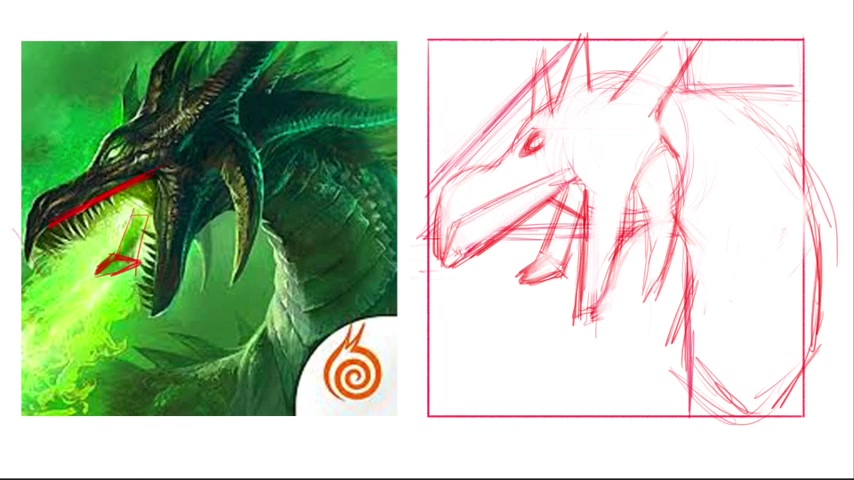
Um And , and that's what I expect from you guys is not perfection , but just for you to do the very best you can .
Now , you'll see that I'm not going in and doing each individual tooth .
What I wanna do is just block in the basic space that those teeth will be using up and then later , then I can go in and do the individual teeth .
I just want to get the most basic shapes in first .
Now , you can see how it helps so much at the beginning to use the negative space or the space that we're not using uh for the dragon to be able to tell where things are supposed to go .
All right .
So now you guys can see how much easier it is to draw something that appears to be complicated .
If you break it down into the most basic shapes possible .
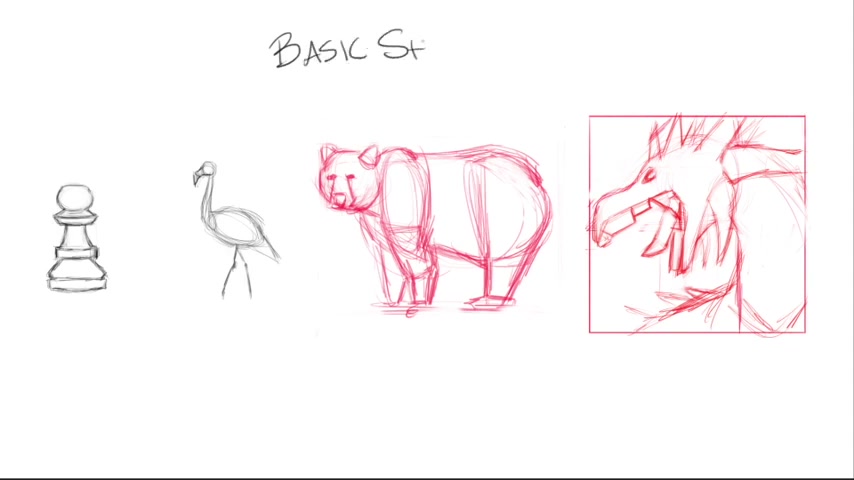
If you do this , you can actually draw anything , you can draw whatever you want by breaking your reference down into basic shapes .
Thanks so much for watching and we'll see you later .
Are you looking for a way to reach a wider audience and get more views on your videos?
Our innovative video to text transcribing service can help you do just that.
We provide accurate transcriptions of your videos along with visual content that will help you attract new viewers and keep them engaged. Plus, our data analytics and ad campaign tools can help you monetize your content and maximize your revenue.
Let's partner up and take your video content to the next level!
Contact us today to learn more.